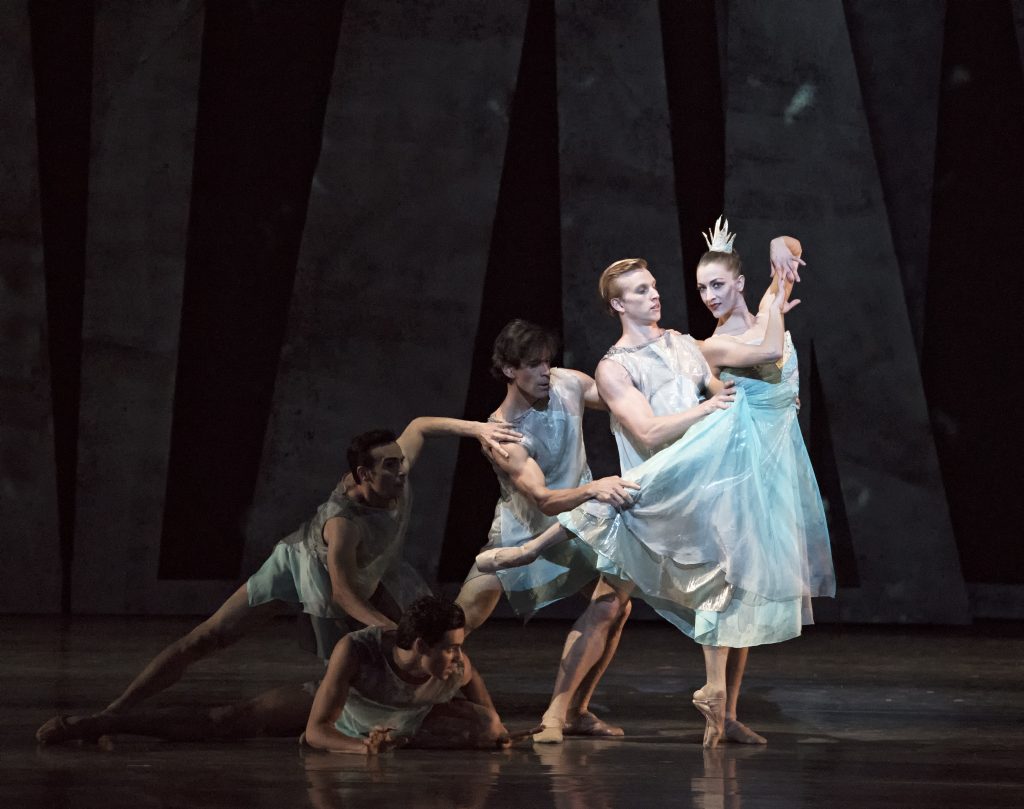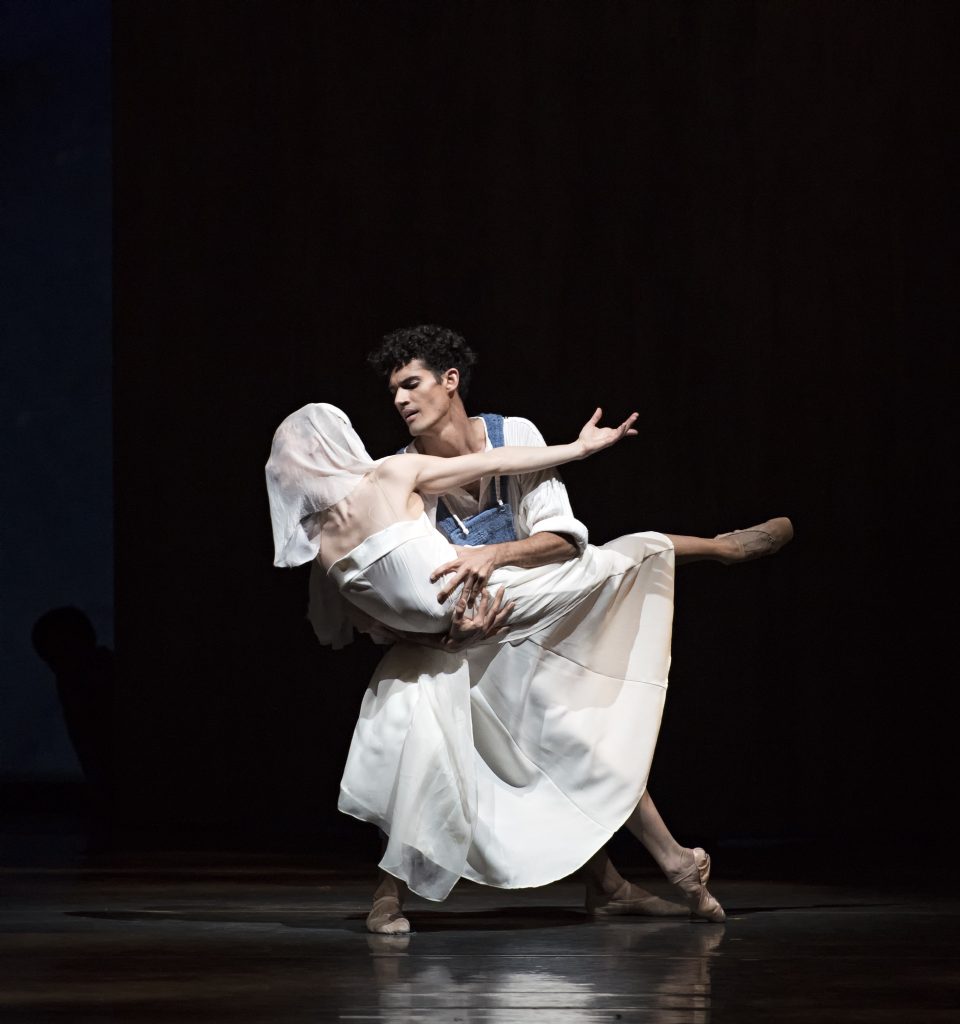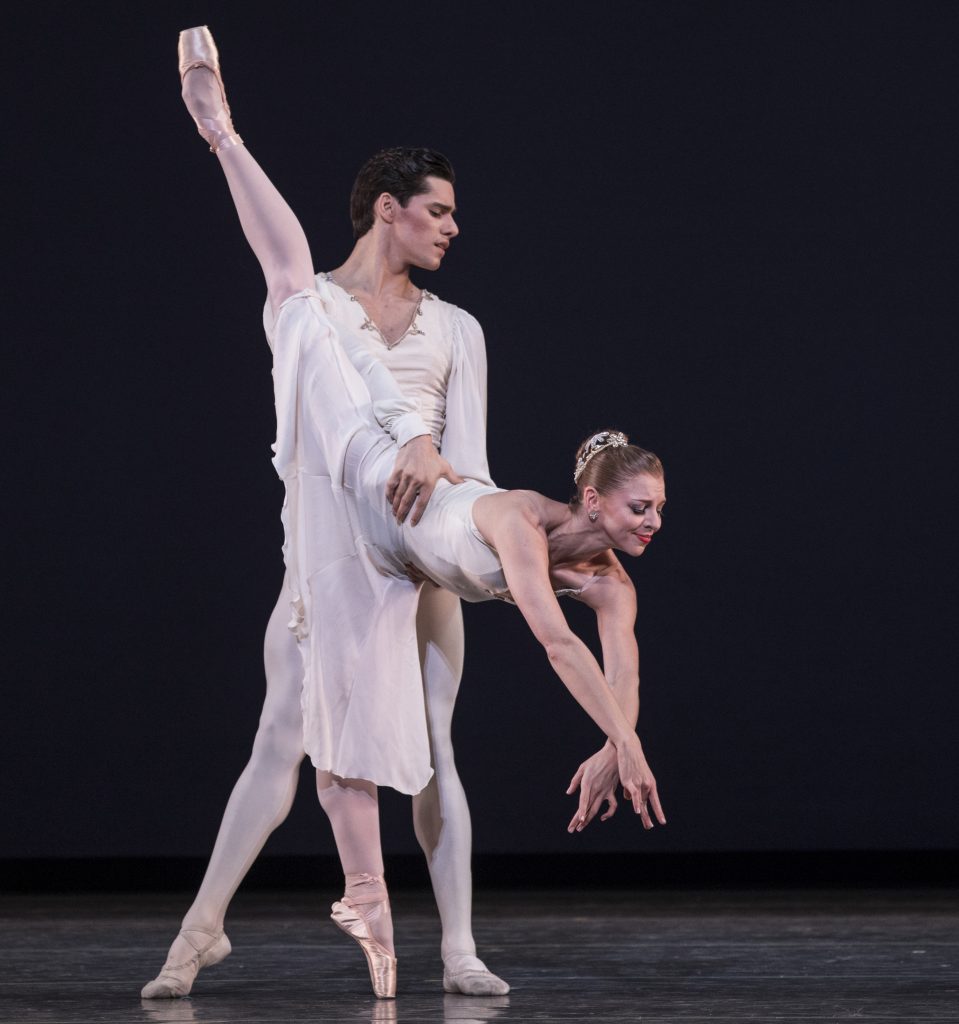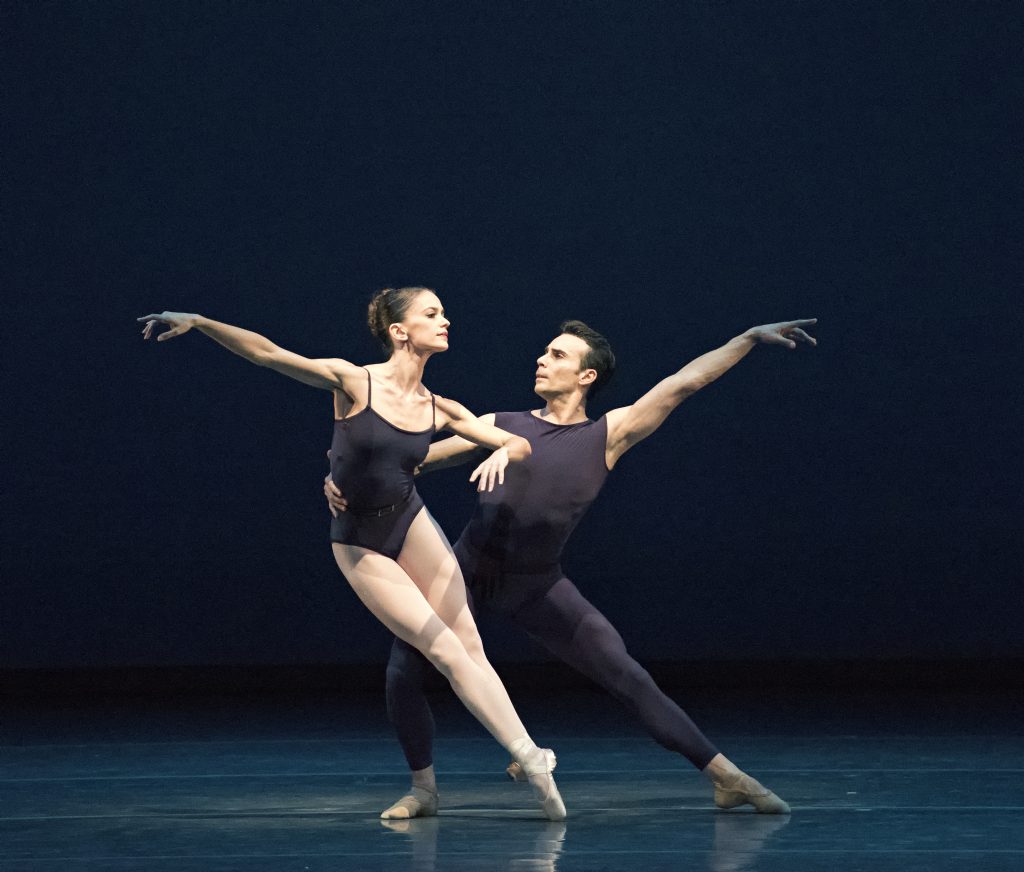
It was the world premiere of Miami City Ballet’s The Fairy’s Kiss that grabbed my attention on Program Three on Feb. 25 at the Kravis Center.
The eagerly awaited and highly publicized new work of the ballet world’s heralded master-choreographer Alexei Ratmansky was beautifully presented. It was all that it was expected to be, but it was the convergence of the creation of this substantial new work with the growing artistry and wonderful vitality of the MCB dancers that resounded. It was the perfect time for this artistic match and the company looked splendid.
Ratmansky is steeped in the Russian ballet tradition, having trained, danced and made his choreographic reputation in Russia. At age 36, he was appointed director of the famed Bolshoi Ballet but in 2009, he left to become resident choreographer for American Ballet Theatre.
In his third attempt to use Russian composer Igor Stravinsky’s Le Baiser de la Fée, Ratmansky created a new take on an old style. The somewhat complicated story line moved along clearly without the burden of traditional mime as he incorporated the storytelling into the choreography.
Le Baiser de la Fée is Stravinsky’s most appealing score. Written as a tribute to Peter Ilyich Tchaikovsky (whom Stravinsky greatly admired), Stravinsky wove about a dozen of Tchaikovsky’s songs and piano pieces into the 1928 score, itself inspired by the Hans Christian Andersen fairytale The Ice Maiden.
It is a lyrically abundant score that has tantalized numerous choreographers over the decades, starting in 1928 with Bronislava Nijinska and including Frederick Ashton, Kenneth MacMillan, John Neumier and Maurice Béjart. George Balanchine also loved this score and choreographed dances to Le Baiser de la Fée three different times.

Translating the title to The Fairy’s Kiss, Ratmansky gave a distinctively fresh touch to his re-envisioned version of the classical ballet. The deep dipping and curving of the upper body together with the extreme use of the plié gave so much more range and level changes to the ballet vocabulary that it was transformed into another realm entirely.
The tale is of a woman dying alone in the forest after giving birth to a baby boy who is found by the Ice Maiden. After giving him a kiss — the kiss that marks his destiny — she tosses the infant to the local villagers to raise. Years later, the Ice Fairy returns to insure that the now young man fulfills his fate.
Unbeknownst to him, The Young Man is destined to never live the life of a mere mortal but to transcend another world — the realm of art. On the eve of his wedding, the Fairy disguises herself as his bride and seals his future with another kiss. The memorable last scene is of the Young Man entering the realm of art.
The French-born set and costume designer Jérôme Kaplan created some very distinctive visuals for the almost 50-minute work. Weaving subtle but striking twists into the scenery, sets and costumes, he complimented Ratmansky’s inventive imagination blending new choices with tradition. I particularly loved the set for the town, with its stylized houses and church, which together with the costumes were reminiscent of 17th-century Dutch landscape paintings but still had a contemporary edge to them. I also loved the projections on the scrim, which had the look of the collage cut-outs of Henri Matisse.

In the lead role as The Fairy, Simone Messmer did not disappoint. Her cool demeanor, polished technique and natural elegance made her perfect for the Ice Maiden. Renan Cerdeiro, looking handsome in his longer hair, was The Young Man. With seemingly carefree abandon, he displayed wonderful clarity in his technique with his rapid beats/footwork and his impressive ability to suspend in the air. With her always beautiful dancing, Jeanette Delgado was warmly captivating in her role as His Fiancée.
Ratmansky’s choreographic skills were especially evident in his ensemble work. The distinctive rhythmic blending of uncharacteristic steps with character steps was refreshing but still realistic in the villagers’ dances. But it was the last section, when the large corps de ballet entered — dressed in neutral-colored, draped gauze — and proceeded to construct an array of almost architectural formations that Cerdeiro wandered through in an amazed state, that time and even the music seemed to pause. The final image was of The Young Man, isolated in the realm of art, being raised up and ascending to a level higher than mere mortals.
There were a few oddities. The one-shouldered, filmy blue-and-green costumes for the forest spirits in the wintery first scene made them looked more like lost water nymphs. The body of the baby doll used in the first scene was so unrealistically stiff that it looked like a football, especially when The Fairy tossed him like a touchdown pass to the villagers. And lastly, the idea that The Fairy could pass so easily as His Fiancée by just wearing a bridal veil wasn’t convincing.

Opening the program was the company premiere of the joyful Walpurgisnacht Ballet, one of those perfect Balanchine concoctions. Set to music from French composer Charles Gounod’s Faust, two dozen beautiful women — with flowing dresses and tresses — skimmed across the stage brandishing Balanchine’s trademark speedy footwork.
Jovani Furlan was the token male in the cast whose role was to attend to his partner Lauren Fadeley. Fadeley, who recently joined the company as a soloist, is a wonderfully luscious dancer who looked totally at ease in the Balanchine style displaying her lovely foot work and de rigueur jutting hip moves.
Nathalia Arja was also in her element, lightly and delightfully moving with articulated speed like a hummingbird darting around the stage with Emily Bromberg and Ashley Knox as her counterpoints.

Christopher Wheeldon’s elegantly etched Polyphonia was also on the program. Set to 10 piano pieces by György Ligeti and performed by company pianist Francisco Rennó, the work began with the eight dancers stretched across the back of the stage performing an array of short precise movements that were arranged into a well-crafted canon. This stark simplicity created an abstract intensity to the work that each ensuing duet continued to display. All four couples were wonderful and equally adept with the atypical partnering.
It was a rich evening of dance. Miami City Ballet has never looked better. The selections of works on Program Three all seemed tailor-made to accent the vitality, artistry and technical strength of the company dancers.